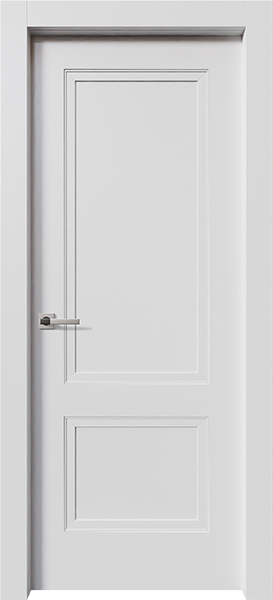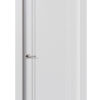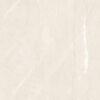Description
THE DOOR NAME ORIGIN – “CASCADE STYLE EDUARDO”
This interior door is a two-panel affair combining everything that is attractive about traditional themes with contemporary design ideas.
The molding constructed in layers of natural wood is what makes it part of the Cascade Style interior door family. In addition to the overall elegance achieved by it, this method also increases the door’s structural integrity. Wait, there’s more.
A number of recent technological breakthroughs introduced the “wrap” method of applying the finish. Without going too deep into detail, suffice it to say that the pressure-and-heat-driven process known as “stretching,” working on molecular level, effectively fuses the surface with the finish. This renders the resulting product warp-resistant, water-resistant, scratch-resistant, and positively fade-proof. In light of the above, this interior door requires very little maintenance.
Even though some of the design elements are naturally Italian, the overall spirit of this interior door model is unmistakably English, and the name is the Italianized version of the beloved British king known to historians as Edward the Confessor.
No doubt as part of the Roman Empire, Britain inherited some architectural ideas and traditions from the south of Europe. That said, certain ideas and themes incorporated into so many designs (including interior doors) do come from “this precious stone set in the silver seas” rather than Rome, and many of these date back to the epoch before the Norman Conquest.
Among his other achievements, Edward’s founding of the great architectural complex known colloquially today as, simply, Westminster Abbey, truly stands out. Very little remains of the original structures – it’s been almost a thousand years after all – but rest assured that each time something was demolished to make room for a new building, the essentials of the style were scrupulously preserved, and the palace that was restored in the Nineteenth Century is very similar to what Edward had in mind when he commissioned the complex. Next time you’re in London, note that the other structures (the Abbey and the celebrated tower known as the Big Ben) blend in perfectly, even though they were designed and constructed in very different epochs under very different circumstances. It would surprise some folks to learn that said tower was constructed in the year 1959, practically yesterday by historical standards! This time-defying thematic integrity is what originally inspired the designers of this interior door model.
The popularity of the king’s name around the globe is a testament of his own popularity during his reign.
Let us assure you that this interior door comes with all the outstanding features characteristic of Almes products, such as, to pick one at random, the state-of-the- art hardware, including the Italian-made 3D-adjustable self-lubricating concealed hinges. The 3D configuration makes this interior door amazingly easy to install. The self-lubrication ensures that it will never creak. And, of course, the concealed part only adds to the overall elegance of the design. You won’t see the pin from either side when the door is closed because, well, there is no pin. The other hardware elements worth noting are the soundless magnetic lock and the automatic sweep. The latter, along with certain other nuances, greatly increases this interior door’s sound-proofing and thermal insulation qualities.
You should look at the available finishes now.
FINISH: PRIMED
The advantages of this approach – of this type of interior door finish – are fairly obvious. Pick a color, any color that suits your projects best. Mix and apply. Re- coat whenever you feel it is necessary to do so. Touch it up. It gives you, the proud owner of these interior doors, complete freedom of choice, and the significant savings, especially where it comes to bulk orders, can be a true source of joy.
As Kurt Vonnegut mentions in one of his novels (Bluebeard, unless I’m mistaken … check it out when you get a chance), the thrill of laying on colors is a large part of the artist’s professional satisfaction. In other words, a keen pleasure.
When back in the remote past visual arts became a field dominated by professionals rather than hobbyists, the main problem of “just laying on paint” became obvious: you can’t.
The medium of choice back then was egg tempera, a permanent, fast-drying substance consisting of colored pigments mixed with a water-soluble binder medium, usually glutinous material such as egg yolk. Portraits and ornaments were executed in this medium, and the wood panel was the surface of choice. One of tempera’s interesting features is that it is not as easily absorbed by wood as other mediums. Some sort of primer was necessary, of course, but pretty much any substance that dried evenly could be used.
The drawbacks of tempera, or pintura al temple, as the Spanish call it, only became obvious with the advent of the Renaissance, when the leading representatives of the trade turned to oil (and interior doors suddenly became a great deal less crude, but that’s a story for another day).
Oil painting is the process of “painting with pigments with a medium of drying oil as the binder.” Commonly used types include linseed (highly preferable in art, though not necessarily in interior doors, mind you), poppy seed, walnut, and safflower.
Today, five hundred years later, it is safe to say that oil is more versatile than pintura al temple – by orders of magnitude. Specifically, the contrasts achieved through the former are much greater, the darks are far deeper, and three- dimensional, highly realistic images are much easier to achieve. Next time you visit a museum, take a closer look at pintura al temple portraits. All of them, without exception, come off as a bit “flat” as opposed to their latter-day counterparts.
Also, where glazing is concerned …
Glazing: a painting technique in which a transparent layer, with just a touch of pigment, is laid over a previously painted surface, allowing light to travel through the glaze and be reflected back off of the opaque layer below. Gentle shadows, subtle changes of color, smooth transitions – all these can be achieved through glazing, which was used by all artists up until the middle of the Nineteenth Century, when artist tubes were invented, revolutionizing the field, and other techniques began to be explored.
Tempera enthusiasts (it takes all kinds to make a world) will assure you that glazing is not just possible in pintura al temple but is actually the basis of the whole enterprise. Well, what are you going to do? They’re enthusiasts.
Anyway, la peinture à l’huile, as the French call it, re-introduced the ancient problem of most surface’s propensity to absorb dipingere, as the Italians call the stuff. Wood or canvas, it is all the same: you’re not going to get very far without a good primer.
Experiments were conducted, and soon rabbit skin glue emerged as the least expensive and most effective solution. It was easy to apply. It dried evenly. It made the application of the l’huile stuff on top of it a walk in the park.
There were drawbacks. Today, rabbit skin glue is considered to be a major cause of cracking by most modern conservators. (Remember, when you visited the Metropolitan Museum of Art – and did you see those interior doors? … some of them are quite something … – most “old masters” pictures are completely covered with a cobweb of cracks? There you go). Because the glue is hygroscopic, it continually absorbs moisture from the atmosphere, causing the glue to swell and shrink as ambient humidity levels change. Over many humidity cycles, this repeated flexing causes the brittle oily layers to crack.
To combat this problem, modern primers are made of acrylic materials which are guaranteed not to cause any damage to the dipingere. No bubbling, no cracks. Your interior doors are safe.










